- Guides
- B2B
-
Climbs
-
Climb Elbrus
- Elbrus individually
- Elbrus from the South, 9 days
- Elbrus from the South, 7 days
- Elbrus from the South in 1 day
- Elbrus from the North
- Elbrus Two Summits
- Elbrus Traverse South to North
- Elbrus Traverse North to South
- Elbrus "Cross" from South
- Elbrus "Cross" from North
- Kazbek+Elbrus
- Elbrus from the West
- Elbrus by helicopter
- Elbrus holidays, 9 days
- Elbrus holidays, 7 days
- Tinder Tour: Climbing Mount Elbrus
- Climb Elbrus from the South, 9 days with Sergey Baranov
- Under 5000 m
- 5000+ meters
- 6000+ meters
- 7000+ meters
- 8000+ meters
-
Climb Elbrus
-
Trekking
-
See 8000m
- K2 base camp
- Everest base camp
- Everest base camp via Gokyo
- Everest base camp in a week
- Annapurna circuit
- Trekking the Manaslu Circuit
- Trekking to Kanchenjunga Base Camp
- Trekking to Kanchenjunga Base Camp (Short)
- Trekking to Kanchenjunga Base Camp (India)
- Trekking to Makalu Base Camp
- Trekking to Annapurna BC
- South America
- Asia
- Africa
- Russia
- Europe
-
See 8000m
-
Adventures
-
Africa
- Tour to Morocco for New Year
- Morocco: Toubkal and the mysteries of the Sahara
- Tour to Eritrea: Dahlak Archipelago and Rashaida Nomads
- Tour to Rwanda: Mountain Gorillas and Mount Bisoke
- Ethiopia
- Tour to Uganda: Queen Elizabeth National Park and Mountain Gorillas
- Safari Tanzania
- Safari Uganda
- Tour to Zimbabwe and South Africa: Victoria Falls, Cape Town, and Cape of Good Hope
- Namibia
- Safari Kenya
- Tour to Botswana: Okavango Delta and Chobe National Park
- South America
- Asia
-
Africa
- Ski-touring
- VIP
- Useful
- About
Climb Aconcagua, 12 days
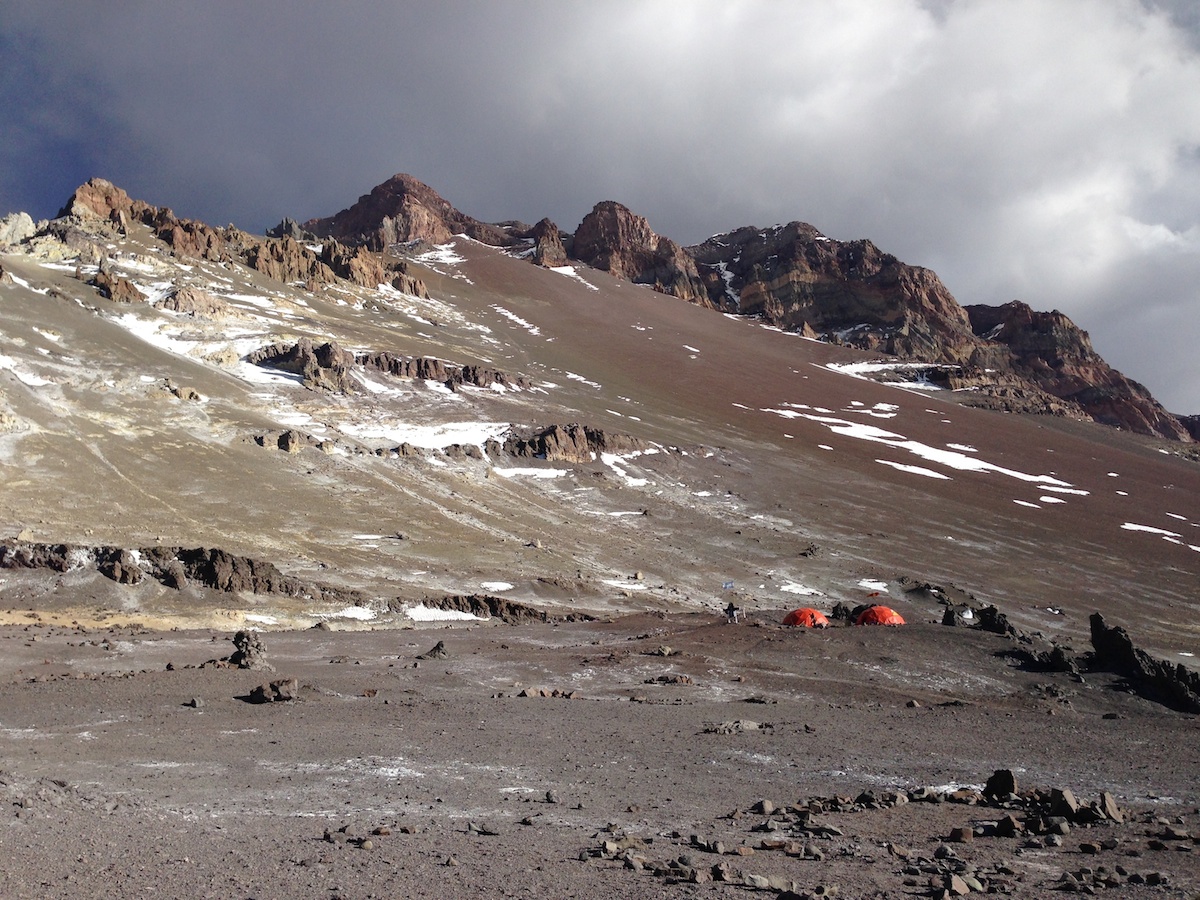
- Height (m)
- 6957
- Duration
- 12 days
- Difficulty
- Moderate
- Continent
- South America
4500 $
Why to go with us?
Temporarily unavailable
The short Aconcagua ascent program is well suited to alpinists in good physical shape with the experience of climbing above 5500m. If you don’t have a proper mountain experience, we recommend to spend more time and take advantage of Aconcagua ascent classical program.
НаверхAbout the tour
The 12-day Aconcagua Climbing Program is a shortened version of the classic Aconcagua Climbing Program. The acclimatisation in this program has a much tighter schedule, so the mountain is much less forgiving of mistakes in tactics and physical preparation. Don’t forget the medical supervision at the base camp, where the doctor must check the acclimatisation of the members and allow or not allow them to go to the mountain. Of course, it is possible to renounce the responsibility of the National Park, but in this case you lose the free help of the rangers in case of emergency. It should be added that, for obvious reasons, this program remains the most popular of all the companies that carry out Aconcagua climbs. The percentage of climbs is lower than in the three-week program.
Guided Aconcagua Climbing Program (12 days).
Day 1. Arrive in Mendoza. Important! On Saturdays the permit office is only open until noon! Obtaining the permit for Aconcagua. Transfer to Penitentes (2700m). Sending of the main mules to the base camp. Arrival at the hotel.
Day 2. Transfer to the entrance of the National Park (Laguna Horcones) and walk to the confluence (3300m, 2-3 hours). Setting up the camp. After lunch, easy acclimatisation walk.
Day 3. Early acclimatisation walk to Plaza de Francia (4200m) with views of the south wall (2700m). 4-5 hours. Return to camp.
Day 4. Long trek (8-9 hours) to the main base camp – Plaza de Mulas (4350m). The trail follows the wide valley of Playa Ancha. Setting up the camp.
Day 5. Ascent from Plaza de Mulas to Camp 2 (Nido de Condores, 5400m), descent to Plaza de Mulas (4350m), rest.
Day 6. Rest day.
Day 7. Ascent from Plaza de Mulas (4350m) to Nido de Condores (5400m).
Day 8. Climb from Nido de Condores (5600m) to camp 3 (Cholera, 6000m).
Day 9. Climb to the summit of Aconcagua (6957m), descent to camp 3 (6000m).
Day 10. Reserve day in case of bad weather
Day 11. Descent to the Plaza de Mulas base camp. Trek from the base camp to the Laguna de Horcones. Transfer to Mendoza. Farewell dinner.
Day 12. Departure.
The cost of Aconcagua ascent doesn’t include:
- International flights
- Climbing permit
- Porters
- Personal equipment
- Additional costs due to deviations from the program
- Medical insurance and accident evacuation costs
- Personal expenses (drinks, internet, phone calls, etc.)
- Any costs related to program changes
- Any costs caused by the changing of the programs
Insurance
НаверхEquipment for the Aconcagua climb
Скачать PDFDocuments:
- Valid passport
- Flight tickets
- Medical insurance
Personal equipment:
- Backpack. 50-60l.
- Sleeping bag, comfort temperature from -25C to -15C.
- Sleeping mattress.
- Trekking poles.
- Crampons, can be aluminium.
- Ice axe. Classic, on a lanyard. Can be lightweight or combined with a ski pole.
- Helmet.
- Harness.
- Carabiners, 3 pieces.
- Cup-Spoon-Bowl.
Clothes and footwear:
- Mountaineering Double or triple boots. Double: plastic or leather. For plastic we recommend Scarpa Vega – they seem to be the warmest of the double boots.
- Trainers or trekking boots. Ideally both. Sneakers for the base camp trail, light boots for the acclimatisation exit and base camp. You can also just have trainers.
- Waterproof layer – jacket + trousers. The industry offers a wide range of products, from simple 5000/5000 membranes to Gore-Tex products.
- Fleece suit.
- Thermal underwear layer – top and bottom
- Thick and warm down coat.
- Thick gloves.
- Thin gloves.
- Bandana (in addition to protecting you from the sun in the valley, can be used to warm your neck or face in the cold).
- A cap.
- Warm trekking socks for the day of the climb.
Miscellaneous:
- LED headlamp.
- A pair of sunglasses.
- Ski goggles.
- 1L thermos. Preferably without a button on the lid.
- Windproof mask for the lower part of the face (can be partially replaced by a scarf).
- Gaiters.
- Sun block and lip balm.
- Chemical heaters (not essential, but can be very useful).
- Personal first aid kit.
- Elastic bandage and/or support bandage.
You may also like
-
Discount!
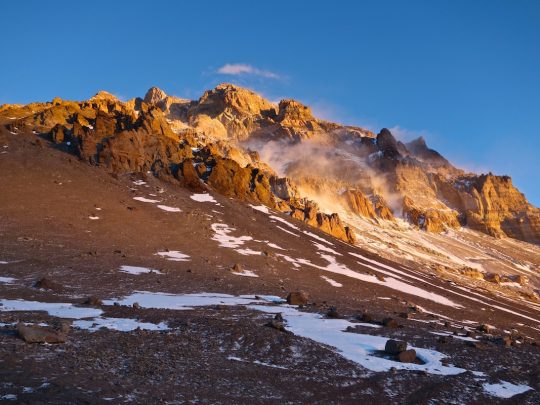 Original price was: 6,650 $.5,500 $Current price is: 5,500 $.
Original price was: 6,650 $.5,500 $Current price is: 5,500 $.Climb Aconcagua, 17 days
- Height (m)
- 6957
- Duration
- 17 days
- Difficulty
- Moderate
- Continent
- South America
- Children
- From 14 years old
- Accomodation
- There are tents
-
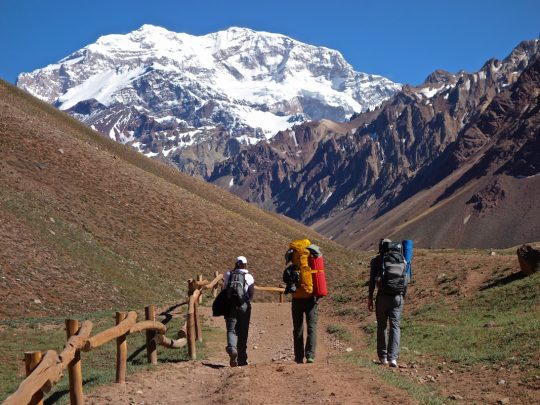 4,000 $
4,000 $Climb Aconcagua, 7 days
- Height (m)
- 6957
- Duration
- 7 days
- Difficulty
- Moderate
- Continent
- South America
- Children
- No
- Accomodation
- There are tents
-
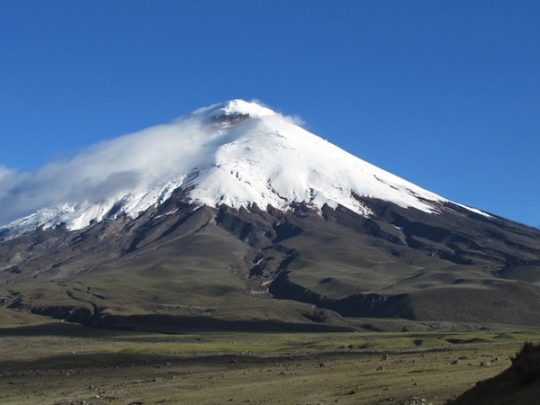 3,900 $
3,900 $Climb Chimborazo and Cotopaxi
- Height (m)
- 5897, 6384
- Duration
- 11 days
- Difficulty
- Moderate
- Continent
- South America
- Children
- From 14 years old
- Accomodation
- Hotels only
-
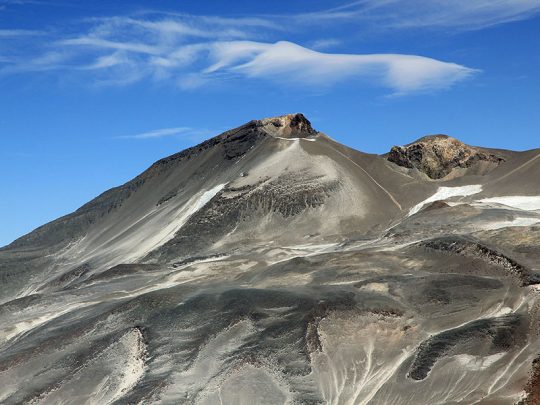 6,000 $
6,000 $Climb Ojos del Salado
- Height (m)
- 6893
- Duration
- 15 days
- Difficulty
- Moderate
- Continent
- South America
- Children
- From 14 years old
- Accomodation
- There are tents